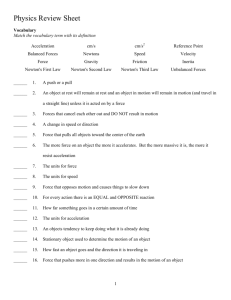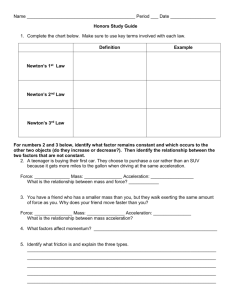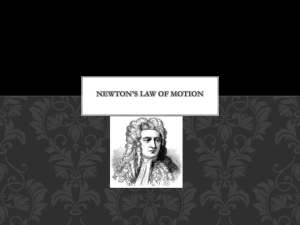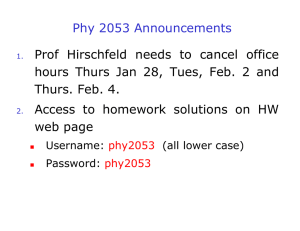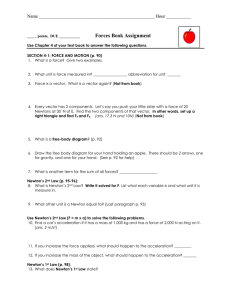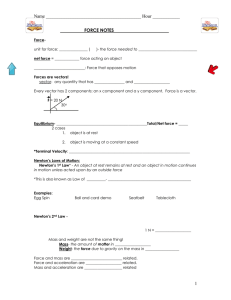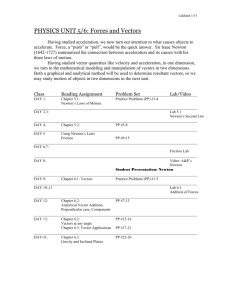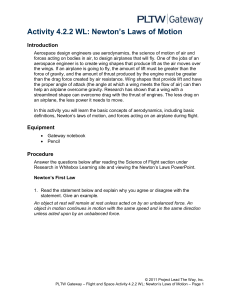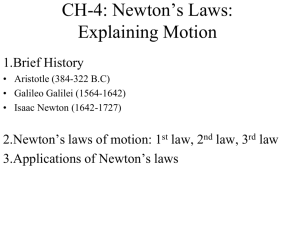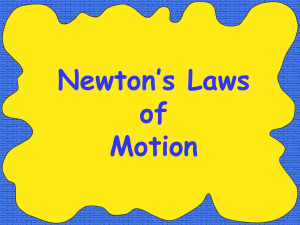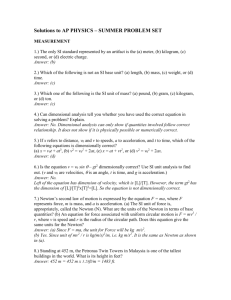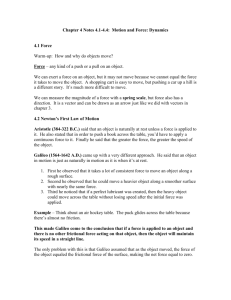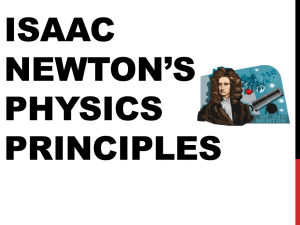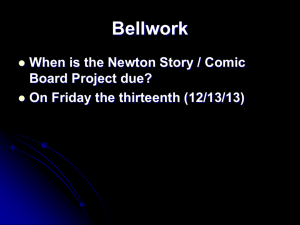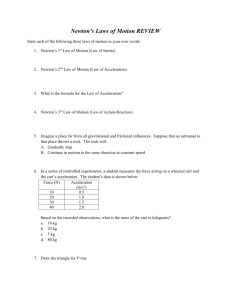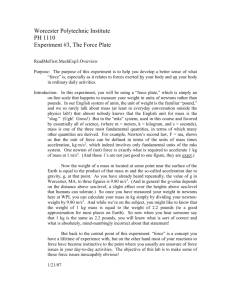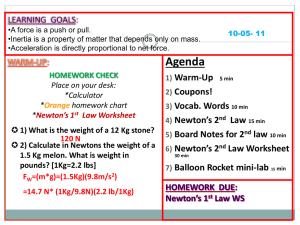F = ma
advertisement
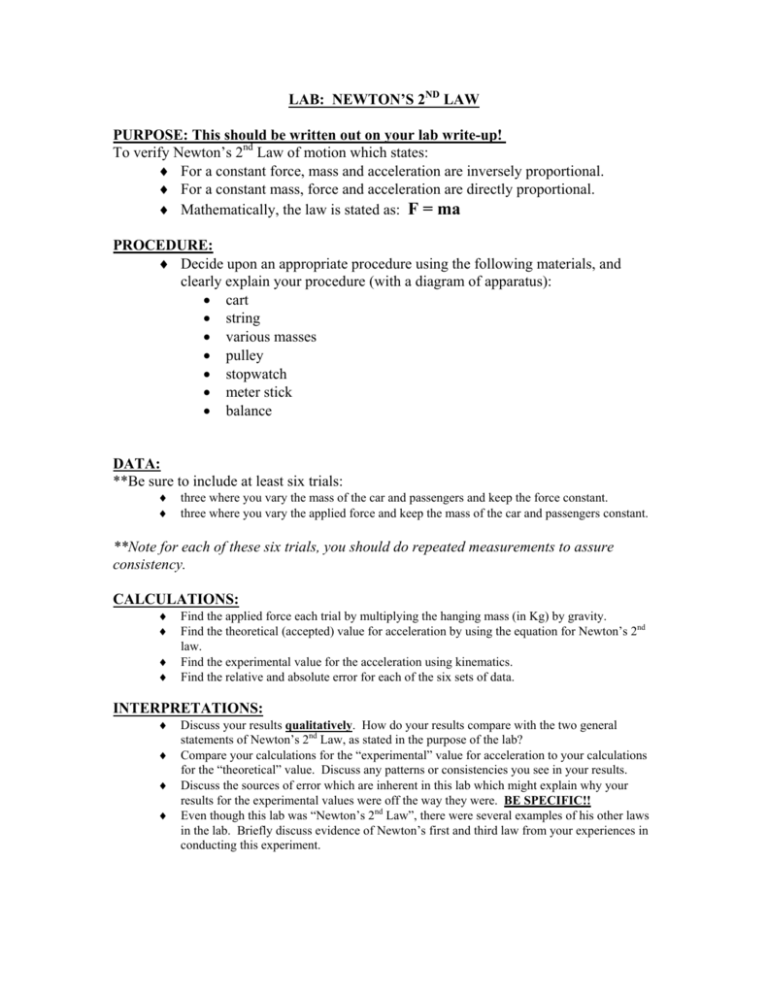
LAB: NEWTON’S 2ND LAW PURPOSE: This should be written out on your lab write-up! To verify Newton’s 2nd Law of motion which states: For a constant force, mass and acceleration are inversely proportional. For a constant mass, force and acceleration are directly proportional. Mathematically, the law is stated as: F = ma PROCEDURE: Decide upon an appropriate procedure using the following materials, and clearly explain your procedure (with a diagram of apparatus): cart string various masses pulley stopwatch meter stick balance DATA: **Be sure to include at least six trials: three where you vary the mass of the car and passengers and keep the force constant. three where you vary the applied force and keep the mass of the car and passengers constant. **Note for each of these six trials, you should do repeated measurements to assure consistency. CALCULATIONS: Find the applied force each trial by multiplying the hanging mass (in Kg) by gravity. Find the theoretical (accepted) value for acceleration by using the equation for Newton’s 2nd law. Find the experimental value for the acceleration using kinematics. Find the relative and absolute error for each of the six sets of data. INTERPRETATIONS: Discuss your results qualitatively. How do your results compare with the two general statements of Newton’s 2nd Law, as stated in the purpose of the lab? Compare your calculations for the “experimental” value for acceleration to your calculations for the “theoretical” value. Discuss any patterns or consistencies you see in your results. Discuss the sources of error which are inherent in this lab which might explain why your results for the experimental values were off the way they were. BE SPECIFIC!! Even though this lab was “Newton’s 2nd Law”, there were several examples of his other laws in the lab. Briefly discuss evidence of Newton’s first and third law from your experiences in conducting this experiment.



